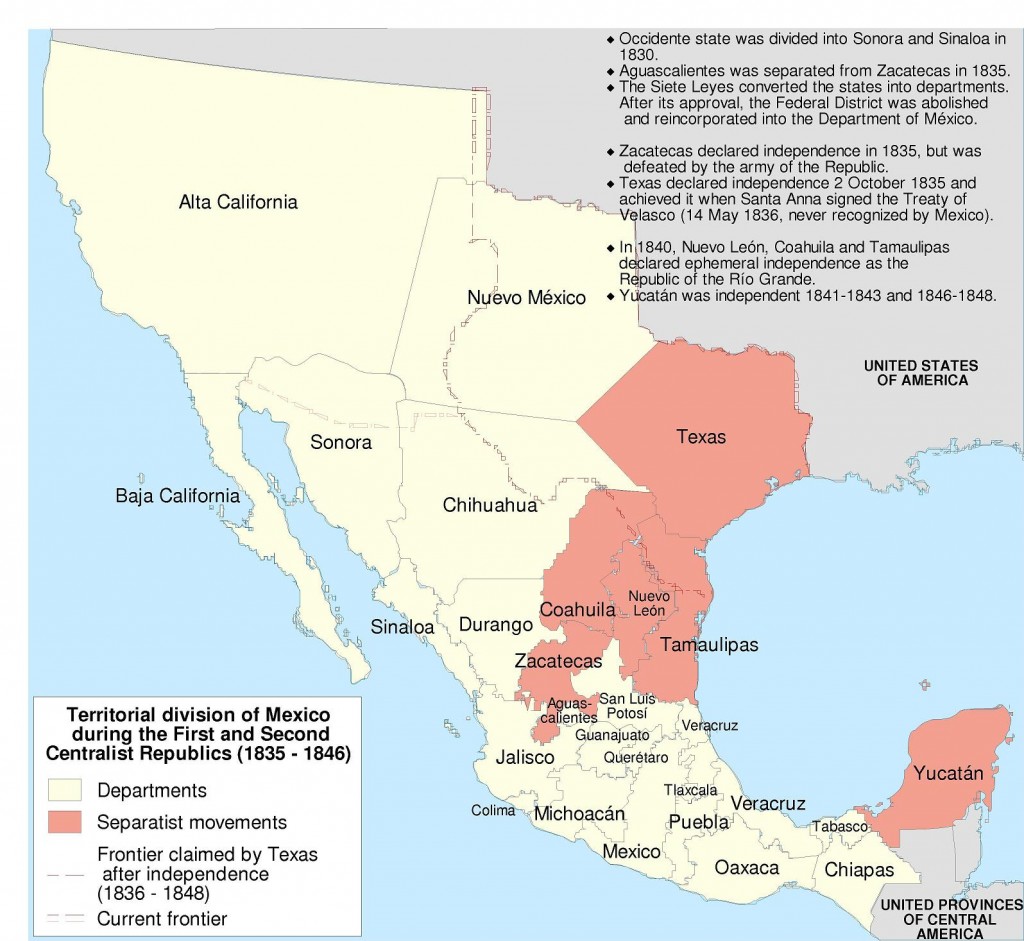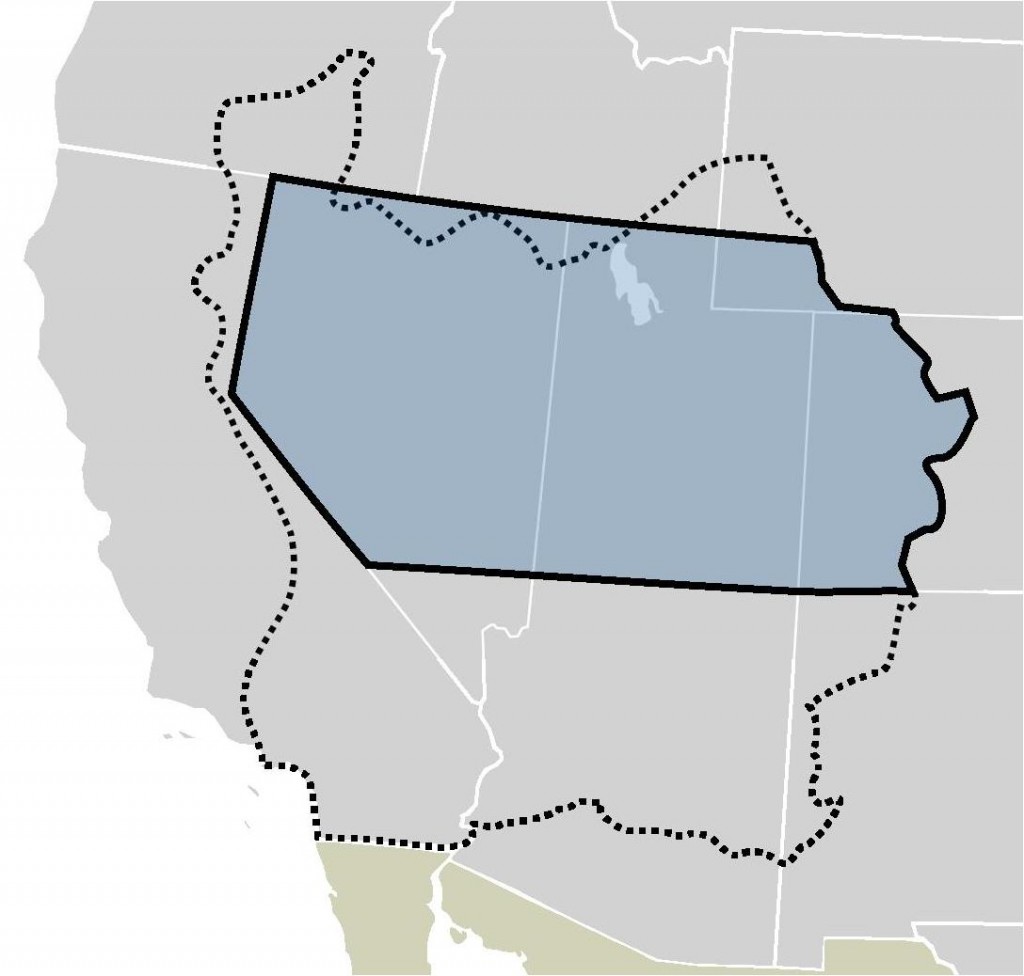Your blog host is delighted to pass the torch over to Louis for a turn. The man can write a mean paragraph!
After a brief discussion in the car about Utah’s somewhat unique history, Maggie requested a guest post, and I was more than happy to oblige. This post will be history heavy, but some stories are just too interesting not to tell. — Louis
Texas gained independence in 1836, the only of several Mexican separatist movements which succeeded (The state of Zacatecas also revolted in 1835, but was defeated by the Mexican army. Shortly thereafter, the state of Yucatan achieved independence for roughly 6 years). Texas’ independence was recognized by the American and major European powers, but Mexico retained its claim to Texas, considering it a breakaway province to be reclaimed as the state of Yucatan was reclaimed. When Texas was formally admitted to the union in 1845, the conflicting claims between Mexico and the US led to the Mexican-American war. After decisively defeating Mexico and occupying Mexico City, Mexico was forced to sign the 1848 Treaty of Guadalupe before civil war tore the remainder of the country apart. As part of the treaty, the majority of what is now the American southwest was acquired, including the entirety of Utah.

The provinces which revolted against Mexican rule around 1840. The success of the Texan independence movement was undoubtedly aided by unrest closer to the Mexican capital, with several states achieving independence for short periods of time. SOURCE:WIKI
The land acquired by the US in the Mexican-American war included the Great Basin, 10,000 square miles of land which drains to the Great Salt Lake instead of the ocean. While such drainage basins are common in other continents, the Great Basin is the only major basin in North America, with the next largest basin surrounding Mexico City. The only way in or out of the Great Basin is a series of narrow mountain passes.

The drainage basins of North America. The Great Basin sits west of the Rocky Mountains, but east of the Sierra Nevada Mountains, surrounded by the Pacific drainage basin. SOURCE:WIKI
While Texas was fighting for independence, the Church of Latter-Day Saints (LDS), founded in 1830, was struggling to find a home. Starting in the city of Ohio, Missouri, the church grew at such a rapid rate that it threatened to gain political hegemony in the still young state. Political tensions eventually boiled over into the 1838 Mormon War, which resulted in a handful of deaths and the LDS church and her followers being expelled from Missouri and forced to take refuge in Illinois. The refuge was short lived, and further religious conflicts between Mormons and Christians led to a general migration of the LDS church to the West, beginning around 1847 and 1848, by which point the American victory had secured a large swath of largely uncolonized land. The migration continued for several decades, but by 1850 the main thrust of the migration had colonized the Ogden-Salt Lake City-Provo corridor, which had become the new home of the LDS church.
Arriving in the Great Basin adjacent to the Great Salt Lake, the settlers found a land with no permanent settlement; but after only four years of settlement the LDS communities had established permanent viable towns and applied for statehood. The proposed state of Deseret contained the entire Great Basin, and a wide area directly eastward to the continental divide. The recent unrest in Missouri and Illinois, coupled with the non-typical practices and teachings of the LDS and the ambitious size of the proposed state led to its rejection by Congress.

The proposted state of Deseret is outlined by the dashed line, while the shaded blue area was the territorry of Utah. The size of Deseret led, along with cultural and religious conflicts, led to the rejection of the petition for statehood. SOURCE:WIKI
A period of deep suspicion and divisions preceding the Civil War led to concerns over the theo-democratic government forming in the Utah territory due to the large number of LDS church leaders elected and appointed to government offices. James Strang, a rival LDS leader, had fanned these fears by proclaiming himself king of his followers on Beaver Island in Lake Michigan. The fear of a rebellious religious state forming in the west led President Buchanan to send 2,500 troops, nearly a third of the army at the time, to the Utah territory to replace the territorial governor and LDS leader Brigham Young with Alfred Cummings, and reassert Washington’s authority over the territory. News of the army marching on Utah created a fear of repression similar to that experienced in Missouri, Illinois, and other areas. Martial law was declared, and settlers were ordered to prepare to evacuate with stockpiled food and houses burned to the ground. Militias were mobilized in preparation for several contingencies, including an all-out war, a limited conflict, and a fighting retreat. As the army approached, Mormon cavalry raided the army’s supply trains and burned Fort Bridger, WY, though no one was killed. Mormon infantry barricaded the mountain passes leading to the Great Basin, sealing the valley from the outside world. An early onset of winter and skirmishing with the Mormon resistance led the army to winter near the remains of the burned Fort Bridger. The army’s second Dragoons arrived over the winter, giving the army the ability to parry Mormon cavalry raids. The new governor, Alfred Cummings, also arrived with the second Dragoons, and declared the state of Utah in rebellion, convicting over 60 Mormon leaders of treason in absentia. With several soldiers on both sides already dead, the army prepared for a spring assault on Utah, and it looked as if a rebellion and civil war would begin 4 years before the secession of South Carolina from the Union.
Thomas Kane was unofficially sent west to mediate between the army and the rouge government over winter while Washington DC debated expanding the army to deal with the revolt. Kane convinced federally appointed governor Alfred Cummings to accompany him to Salt Lake City to discuss terms with Brigham Young. After secretive negotiations, Alfred Cummings was accepted as territorial governor in mid-April, just before the spring offensive was to commence. Tensions remained, but Brigham Young permitted the army to enter Utah with nearly 5,500 troops, over two-thirds of the army. Fear of persecution led the LDS to prepare to burn their communities to the ground and flee westwards to the mountains, either in Oregon, Vancouver Island, or Montana. Pressed to end the crisis, President Buchanan issued an offer to the LDS to pardon their leadership if they agreed to submit to the laws of the United States. By the end of the summer a lack of persecution by the army and polite acceptance of the newly appointed territorial governor had allowed tensions to ease, and the prelude to the Civil War was resolved without excessive bloodshed.
Federal control now restored to Utah, the large army contingent was soon evacuated to assist with the war of southern succession. For several decades, tensions between the LDS church officials and federal government officials remained, as the LDS church retained power in many predominantly Mormon communities. However, in 1869 the transcontinental railroad was completed with the driving of a golden spike on Promontory summit just north of the Great Salt Lake. The influx of non-Mormon settlers and federal marshals to enforce the territories’ laws led to a moderation of LDS church and Utah territory politics, alleviating Washington’s concerns about the culture and loyalty of the territory. Utah was admitted to statehood in 1896, nearly 50 years after it first applied for statehood and after a near civil war.
